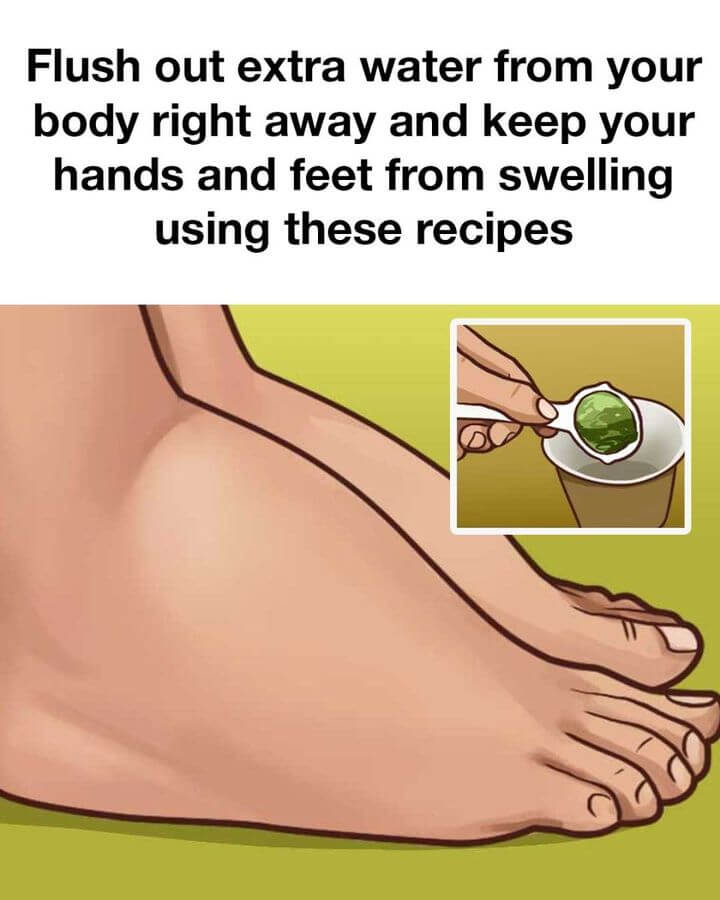Water retention—commonly known as edema—happens when the body holds onto more fluid than it needs. This can lead to noticeable swelling in areas like the hands, feet, legs, and ankles. Although usually temporary, ongoing fluid retention may cause discomfort and might point to deeper health concerns. Understanding the causes, signs, and natural ways to manage fluid buildup is essential for overall well-being.
Common Triggers of Fluid Retention
Several factors can cause your body to retain water. These include consuming too much salt, hormonal imbalances, a sedentary lifestyle, certain medications, or health conditions like kidney or heart problems. Identifying what’s behind your symptoms can guide you toward the most effective solutions.
Signs of Swelling in Hands and Feet
Swelling due to fluid buildup often feels like puffiness or tightness in the affected areas. Your skin may look stretched and feel heavier than usual. In more advanced cases, pressing a finger into the swollen skin might leave an indentation. Early recognition of these signs allows for quicker relief and better management.
Why Drinking Water Helps Reduce Water Retention
Though it may seem odd, drinking plenty of water can actually help reduce fluid retention. When your body senses dehydration, it tries to hold onto every drop of water. By staying hydrated, you support proper kidney function, which helps flush out excess sodium and waste, ultimately reducing swelling.
Dietary Changes That Help Reduce Fluid Buildup
Adjusting your diet is a powerful way to combat water retention. Cutting back on salt, eating more potassium-rich foods, and avoiding overly processed items can significantly help. A diet focused on whole foods—like vegetables, fruits, lean proteins, and healthy fats—can naturally support fluid balance.
Foods That Naturally Remove Excess Water
Certain foods act as natural diuretics, encouraging your body to expel extra water. Examples include cucumbers, watermelon, celery, and citrus fruits. Potassium-rich foods such as bananas, avocados, and sweet potatoes also help regulate your body’s fluid levels.
Herbal Teas That Support Fluid Reduction
Some herbal teas can help reduce swelling thanks to their natural diuretic effects. Dandelion tea, green tea, and parsley tea are particularly effective. Drinking one or two cups daily may help relieve bloating and swelling in the extremities.
Epsom Salt Soaks to Ease Swelling
Soaking your hands or feet in Epsom salt water can bring significant relief. The magnesium in Epsom salt helps draw out fluid and ease inflammation. Simply dissolve half a cup of Epsom salt in a basin of warm water and soak the affected area for 15–20 minutes. Doing this a few times a week can help reduce puffiness.
Anti-Inflammatory Smoothie You Can Make at Home
Smoothies packed with anti-inflammatory ingredients offer hydration and healing in one glass. Try this blend: 1 cup kale, 1 cup pineapple chunks, ½ cucumber, 1 tablespoon chia seeds, juice of ½ lemon, and 1 cup coconut water. Drinking this in the morning gives your body a refreshing and detoxifying start.
A Simple Natural Diuretic Drink
You can also whip up a natural diuretic drink to help your body flush out water. Blend 1 cup of watermelon, ½ cucumber, ½ cup cranberry juice, and juice from one lemon. Enjoy this drink earlier in the day for the best results.
Detox Soup Recipe for Hydration and Relief
A warm, nutritious soup can aid in hydration and support the body’s detoxification processes. Here’s a recipe: Sauté 1 chopped onion and 3 minced garlic cloves in 1 tablespoon of olive oil. Add 4 cups of low-sodium vegetable broth, 1 cup chopped celery, 1 cup chopped carrots, 2 cups spinach, and 1 tablespoon fresh parsley. Let it simmer for 20–25 minutes, season to taste, and enjoy as part of your meal plan to reduce excess fluid.
Lifestyle Tips to Keep Swelling at Bay
In addition to dietary adjustments, certain habits can help prevent fluid retention. Regular movement improves circulation and prevents fluid from pooling in the lower limbs. Elevating your legs, using compression garments, maintaining a nutrient-rich diet, and getting quality sleep all support better fluid balance. Stress management is also important, as stress can affect hormone levels that influence fluid retention.
Final Thoughts: Supporting Healthy Fluid Balance
Managing your body’s fluid levels is a key aspect of feeling and functioning your best. By recognizing the causes and early signs of water retention—and using natural methods like diet changes, hydration, and home remedies—you can reduce swelling and maintain your health. Making informed choices about your lifestyle and nutrition is the foundation of balanced fluid retention and overall wellness.
